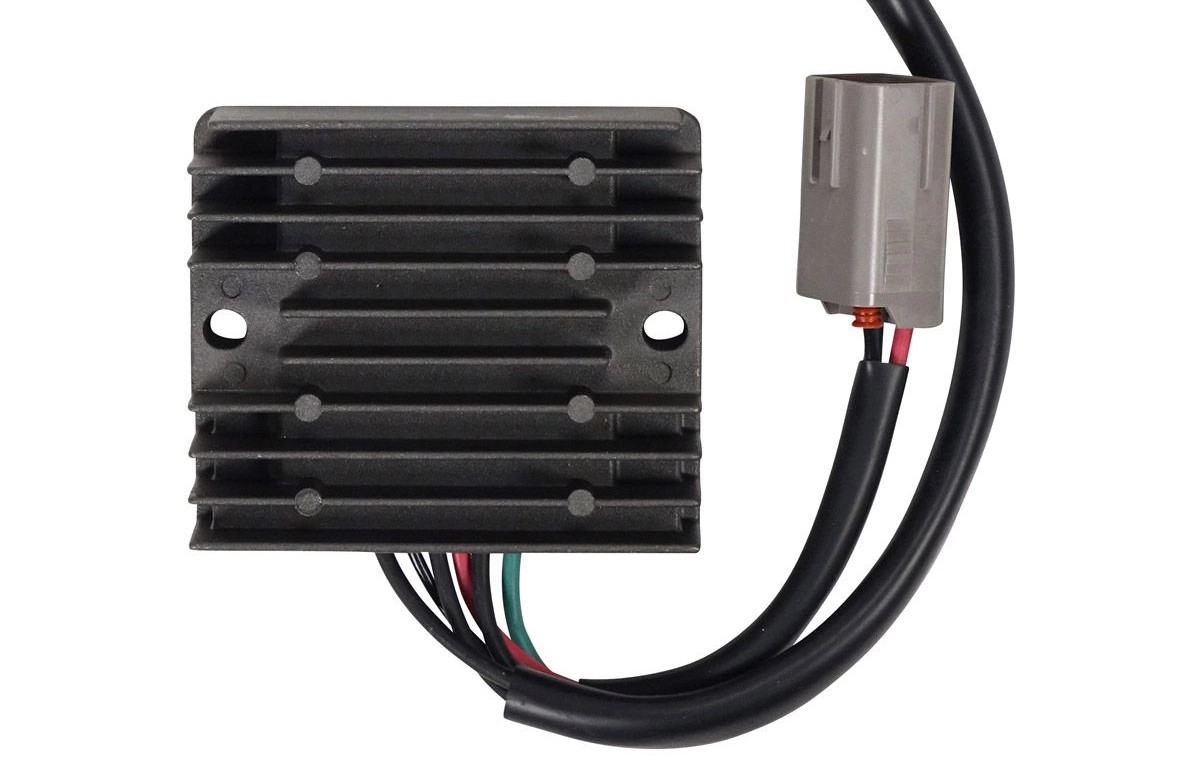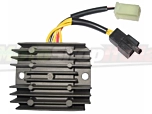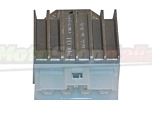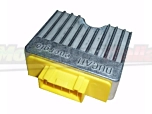Think of the voltage regulator like a referee in a soccer game. It's there to keep things in order, ensuring everything works as it should. Without a referee, it would be chaos, right? The same goes for our electronic devices.
-
Unstable Voltage: When the regulator, or the referee, fails to do its job, the voltage fluctuates wildly. Imagine your TV or computer suddenly turning off or getting damaged. It's not a good situation.
-
Safety Concerns: It's like driving without seat belts. Operating without a properly functioning voltage regulator exposes us to unnecessary risks. Anything from a simple short circuit to more serious issues can occur.
-
Energy Efficiency: Yes, that counts too. An efficient regulator helps to prevent energy wastage. It's like turning off the tap while brushing your teeth. Small actions, big impact.
Understanding how a voltage regulator works and what it does is crucial. It's one of those things we don't notice until it stops working. And when it does, we realize how important it was.
Voltage Regulator Definition and Operation
We have already mentioned that the voltage regulator in a motorcycle is a fundamental electronic component. It acts as a moderator of the voltage generated by the alternator.
-
Stabilizing Voltage: This device is crucial for stabilizing the voltage. It prevents excessive fluctuations that can damage electronic components. It's like a filter that ensures a constant and safe current.
-
Regulating Alternator Output: The operation is based on regulating the alternator's output. Simply put, it manages the excess energy produced during operation, akin to a surplus energy management system.
-
Battery and Electrical System Protection: The regulator's role is vital for the longevity of the motorcycle's battery and the integrity of the electrical system. It ensures that the battery receives an optimal charge and protects it from overloads, acting as a barrier against voltage spikes.
A faulty voltage regulator can cause various issues. The battery may not charge properly, leading to difficult starts. Electrical systems, like lights and indicators, can malfunction. It's like a home electrical circuit without adequate protection.
Identifying Motorcycle Voltage Regulator Problems
Identifying issues with the motorcycle's voltage regulator is critical.
- Battery Not Charging: The most common symptom. If the battery struggles to charge, the regulator might be to blame.
- Irregular Lights: If the headlights or bike lights flicker or dim, consider the regulator.
- Overheating: A faulty voltage regulator can overheat. Excessive heat near the regulator is a warning sign.
- Unstable Electrical System: Issues like a non-functioning horn or a flickering display can indicate a faulty regulator.
- Sudden Engine Shutdown: If the engine shuts down while riding, the regulator could be the cause.
Early Diagnosis: How and Why
Early diagnosis is crucial. It helps you avoid greater damage and high repair costs.
- Check Battery Voltage: Use a voltmeter. Too high or too low voltage is a clue.
- Inspect the Regulator: Look for signs of physical damage or overheating.
- Check the Wiring: Ensure there are no broken wires or loose connections.
- Consult a Mechanic: If unsure, a professional can provide an accurate diagnosis.
Why Is It Important?
Identifying a problem with the regulator early saves you from future troubles. It prevents damage to expensive components like the battery and alternator. It also ensures a safe and stress-free ride. Plus, you save time and money in the long run.
In summary, a functioning voltage regulator is essential for the health of your motorcycle. By keeping an eye on the signs and making a timely diagnosis, you can keep your vehicle reliable and in excellent condition.
Impacts of a Non-Functioning Voltage Regulator
A malfunctioning voltage regulator on a motorcycle can cause several electrical and mechanical issues.
Let's look at these in detail.
Electrical Consequences
- Damaged Battery: Without a functioning regulator, the battery can overcharge or discharge excessively, reducing its lifespan.
- Unstable Ignition System: You might have trouble starting the bike, or worse, the engine could unexpectedly shut down.
- Electronic Malfunctions: From lights to displays, to the horn, everything can be compromised.
Mechanical Consequences
- Overheating: Components like the regulator itself or the alternator can overheat, leading to more serious failures.
- Premature Wear: Electrical components under stress can wear out faster, necessitating early replacements.
Safety Risks and Device Longevity
- Travel Safety: A sudden failure of the voltage regulator can be dangerous. Imagine driving and suddenly the lights go out or the engine stops.
- Motorcycle Reliability: The frequency and severity of failures increase, making the bike less reliable.
- Maintenance Costs: Frequent repairs and component replacements can become costly.
- Motorcycle Longevity: The life of your motorcycle can be significantly reduced.
Troubleshooting and Maintenance of the Regulator
Addressing issues with the motorcycle's voltage regulator requires attention.
Here are some steps to resolve common faults.
Steps to Resolve Common Problems
- Check the Battery: Ensure it is charged and functioning well. A faulty battery can mimic regulator problems.
- Inspect the Regulator: Look for signs of physical damage, such as burns or corrosion.
- Measure the Voltage: Use a voltmeter. Compare the readings with standard values for your bike.
- Examine the Wiring: Ensure there are no damaged cables or loose connections.
- Consult a Technician: If unsure, it's always better to turn to a mechanic.
Preventive Maintenance of the Voltage Regulator
Preventive maintenance can save you from many problems. Here's what to do:
- Regular Check: Periodically inspect the regulator. Look for signs of wear or damage.
- Cleaning: Keep the regulator clean. Dust and dirt can cause overheating.
- Check Connections: Ensure all connections are secure and tight.
- Monitor Voltage: Regularly check the battery's voltage. This will help you detect problems early.
- Replace if Necessary: If the regulator shows signs of malfunctioning, don't hesitate to replace it.
For a more detailed guide on motorcycle maintenance and troubleshooting, you might want to consult specific motorcycle maintenance resources or manuals.
Replacement and Repair
Knowing when and how to replace the voltage regulator on your motorcycle is crucial.
When to Replace the Regulator
- Frequent Malfunctions: If you're regularly encountering problems, it might be time for a replacement.
- Visible Damage: Signs of burning, corrosion, or physical damage are clear indicators.
- Battery Charging Issues: If the battery isn’t charging properly, the regulator might be the cause.
- Overheating: A consistently overheating regulator needs replacement.
How to Replace the Regulator
- Choose the Right Regulator: Ensure it's compatible with your motorcycle model.
- Disconnect the Battery: For safety, disconnect the battery before starting.
- Remove the Old Regulator: Disconnect all cables and remove the faulty regulator.
- Install the New Regulator: Connect the cables according to instructions. Ensure all connections are secure.
- Test the System: After installation, check that everything is functioning correctly.
Tips for Choosing a New Device
- Research: Read reviews and seek advice to find a reliable store like ours.
- Experience: Choose a technician with experience – if you're unsure what to do – especially with motorcycles and voltage regulators.
- Quality of the Regulator: Don't skimp on quality. A high-quality regulator can last longer and perform better.
- Warranty: Ensure the new regulator has a warranty. This gives you extra security.
Conclusion
We have seen that the voltage regulator, though a small device, performs a big job in maintaining balance. Without an efficient regulator, the battery may not charge properly, the motorcycle lights could be unstable, and the engine might struggle.
Caring for the regulator is not just a matter of maintenance; it's vital for the overall performance of your motorcycle. A faulty regulator is not just a nuisance; it can be an indicator of broader issues, negatively impacting the bike's efficiency.
At MotoShopItalia, we understand the importance of a reliable voltage regulator. That's why we offer a wide selection suitable for various motorcycle models. Choosing the appropriate regulator is essential to ensure the safety and reliability of your vehicle. We encourage you not to wait for a breakdown to act; proactive maintenance is key. Regularly checking and updating the voltage regulator is crucial to ensure safe and worry-free travels.

 Italiano
Italiano




